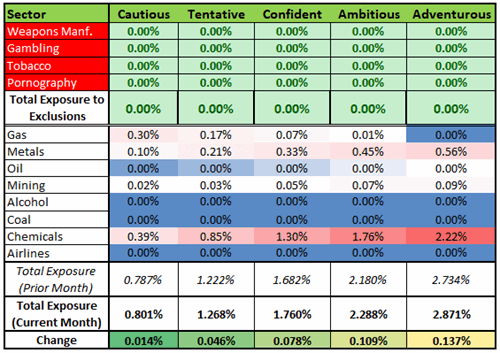As society becomes increasingly conscious of its collective impact on the planet, more of us are turning to ethical investing.
It's a way to grow our money whilst doing our part for society and the environment. But can an investment portfolio represent the wide-ranging ethical principles and priorities of the masses?
The near-Gordian way in which many global corporations are structured certainly presents a challenge for investment managers whose job it is to determine any link between the corporations’ profits and activities considered unsustainable or morally questionable.
Ethical’s rise to fame
Ethical investing is a fast-growing part of the investing world. Since the first ethical investment fund launched in the UK in 1985, it has become a major growth sector, with the worldwide market for 'responsible' investment products estimated to reach $30 trillion by 2030.1
Its relatively slow adoption in mainstream investing, despite a more than 30-year pedigree, may be due to both the preconceived ideas held about potential returns compared to the wider stock market, as well as the sizable challenges fund and wealth managers face in constructing ethical investment plans that appeal to a varied conscience.
How to be ethical
The first challenge in selecting investments is that ‘ethical’ is somewhat subjective which can make the task of appealing to everyone’s taste, problematic. The second challenge is investing’s inescapable raison d’être – to make a profit – whilst still operating in an ethical way.
Inevitably then, ethical investing funds often requires an element of compromise on the part of both fund managers and investors, accepting a small tolerance for unsustainable activities in exchange for giving their money the best chance to grow.
What’s in a Wealthify Ethical Plan
Our Ethical Plans can contain up to 25 ethical investment funds from specialist providers like Brown Advisory and EdenTree to Royal London and Liontrust.
A broad variety is an advantage for investors looking for diversity in their plans, but it also presents a challenge for our investment team in keeping within agreed tolerances of ‘sin stocks’ in customer plans.
Wealthify’s investment committee prioritises tobacco, arms, pornography and gambling as the four main areas for exclusion, while also aiming to limit profits received from other major polluters and contributors to climate change, including gas, metals, oil, mining, alcohol, coal, chemicals and airlines.

A small amount of flexibility is built in to enable investment managers to make decisions that are in the best interest of generating good returns for investors. In the case of the priority sectors (arms, gambling, tobacco and pornography) it’s 10%.
This is a deliberate level – the argument among fund managers being that if less than 10% of a company’s profits are earned from the activity, their involvement in it must be negligible.
We don’t apply a specific tolerance to the other sectors shown, but the aim is always to be as close to 0% as possible. Ultimately the tolerances for our exclusions provide some wiggle room for the investment approach, allowing us to create value for investors without compromising the underlying ethics.
Excluding the other sectors is a more difficult balancing act, particularly when it comes to the higher-risk plans with more challenging growth targets. And some companies in those sectors are already playing a big part in the transition.
While we always do our best to minimise exposure to these sectors, there will inevitably be a small amount of creep – although rarely beyond a few percent.
It’s worth noting that these levels fluctuate month by month, but this snapshot shows that despite a difficult balancing act between ethics and generating growth for customers, our investment managers work tirelessly to ensure that your money is invested in a way that gives your money the best chance to grow, without compromising your values.
Please remember the value of your investments can go down as well as up, and you could get back less than invested.
References:
1: Broadgridge - ESG Investments Poised to Reach $30 Trillion by 2030 (Information true at the time of writing.)



